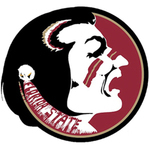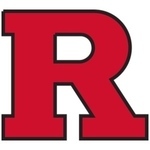University of Arizona
Profile
Size
10 / 10Cost
4 / 10Selectivity
1 / 10-
Team Conference
MCLA Div. 1
-
College Type
4-year, Public
-
Campus Type

City: Large
Student Body
Gender
- Male
- Female
Enrollment
- Full Time
- Part Time
Geography
- In-State
- Out-of-state
- Foreign
- Other
Ethnicity
- White
- Black
- Asian
- Latino
- Foreign
- Other
Other includes American Indian, Native Alaskan, Native Hawaiian or other Pacific Islander, two or more races and unknown race / ethnicity.
Coach Recruiting Interview
This year first year head coach Derek Pedrick brought eight years of NCAA lacrosse coaching experience to the University of Arizona. The “LaxCats” finished the season ranked #14 in the MCLA national polls after beginning the season unranked. Coach Pedrick believes that the Wildcats have the talent to bring a national title to Tucson.
What positive surprises did you see from your team this season?
I thought we had many positive moments this past season. We had some players step up in key situations and that was great to see. It was also fun to watch some of our younger players develop into solid collegiate lacrosse players.
How did your season stack up against your expectations going into the season?
I think we all agree that our team improved and did a lot of great things this past year. However we are all pretty disappointed in not making the MCLA tournament and not winning some more of our big games. On the bright side 5 out of our 6 losses came to teams ranked in the top 10 as we were in every game we played this year.
Where did your team improve the most during the season and which player’s took a step forward in their game?
I feel our defense did a great job at the end of the year keeping us in a lot of games. I was really impressed with our goalie Tanner Knego who ended up having a really solid season. I truly believe every player on the D side of the ball improved throughout the year.
Where can next year’s team improve in order to reach your ultimate goal for the season?
We need to continue to compete day in and day out with each other to create the level of competition we need to be successful. I truly believe we have the talent to win a national title. My goal for our team next year is to become a true tight knit group. All of the successful teams I have ever been on and or coached have been a family. This is something that we are continuing to work on and next year its only going to get better.
Which incoming players are you most excited about and how do they fit with the type of team you are building?
We have around 20 freshmen recruits coming into the fall. I feel this group is an athletic diverse group that will make an impact right from the start. I look forward to seeing what they can bring to the table this fall.
Team Road Trips
Most road games for Arizona are scheduled for the Arizona and California areas against teams including Arizona State, Grand Canyon University, and San Diego State. The team has also traveled to Salt Lake City, Utah to play Westminster and Seattle, Washington to play Washington. Other trips have included Burnaby, British Columbia where they played Simon Fraser.
Recruit Commits
2022 | |||
Hometown |
Position(s) | ||
| Johnny Marietti |

|
Geneva, IL | Att |
| Chris Bobbie |

|
Anthem, AZ | LSM, Def |
2021 | |||
Hometown |
Position(s) | ||
| Nick Strain |

|
Pleasanton, CA | Att, Mid |
2018 | |||
Hometown |
Position(s) | ||
| Seamus Hughes | IL | Att | |
2017 | |||
Hometown |
Position(s) | ||
| Patrick Phelan | Suwanee, GA | Def | |
2015 | |||
Hometown |
Position(s) | ||
| Christian Brady | Highlands Ranch, CO | Mid | |
Events By University of Arizona Coaches
Location
Team Videos
Where Grads Live
- Tucson Arizona Area
- Phoenix Arizona Area
- Greater Los Angeles Area
- San Francisco Bay Area
- Greater New York City Area
- Greater San Diego Area
- Greater Chicago Area
- Greater Denver Area
- Greater Seattle Area
- Washington D.C. Metro Area
- Orange County California Area
- Dallas/Fort Worth Area
- Portland Oregon Area
- Greater Boston Area
- Houston Texas Area
Where Grads Work
- Intel Corporation
- IBM
- Raytheon
- Wells Fargo
- Microsoft
- Raytheon Missile Systems
- Arizona State University
- Pima Community College
- Pima County
- US Army
- The University of Arizona Health Network
- Honeywell Aerospace
- Bank of America
- Boeing
- Hewlett-Packard
What Grads Do
- Sales
- Education
- Entrepreneurship
- Engineering
- Operations
- Research
- Media and Communication
- Information Technology
- Healthcare Services
- Finance
- Marketing
- Consulting
- Arts and Design
- Program and Project Management
- Support
Niche Grades
Overall Experience

Student Life

Professor Rating

Academics

Athletics

Campus

Academics
Test Scores
This range represents the middle half of incoming freshman from the 25th to 75th percentile. The writing component is now optional and no longer reported. Historical writing ranges: 470 - 580 for SAT
This distribution represents incoming freshman test scores and GPA on 4.0 scale.
Admissions
Total |
Male | Female | |
| Applicants | 40,854 | 17,880 | 22,974 |
| % Admitted | 85% | 83% | 86% |
| % Admits That Enroll | 22% | 22% | 22% |
| Incoming Freshman Average GPA | 3.48 |
Admission Considerations
Required | Rec. | |
|---|---|---|
| High School GPA | ||
| High School Rank | ||
| High School Transcript | ||
| College Prep Classes | ||
| Recommendations | ||
| Demonstrate Competencies | ||
| Admission Test Scores | ||
| Other Tests (Wonderlic, etc.) | ||
| TOEFL (English proficiency) |
Majors / Programs
Degrees offered by popularity. Type = Bachelor.
Financial
Net Price
Average net price = sticker price - financial aid.
$16,580
Average net price by income for incoming freshman receiving financial aid.
Net price for students paying in-state tuition rate (public institutions).
Sticker Price
Sticker price = estimated total cost of attendance.
In-state | Out-of-state | |
On Campus | ||
| Tuition & Fees | $12,691 | $34,967 |
| Books & Supplies | $800 | $800 |
| Cost of Living | $13,050 | $13,050 |
| Personal Expenses | $3,500 | $3,500 |
| Sticker Price | $30,041 | $50,367 |
Personal expenses includes laundry, transportation, entertainment and furnishings.
Financial Aid
91% of full-time, incoming freshman receive financial aid.
Receiving Aid % | Avg. Aid Amount | |
Type of Aid | ||
| Grant or Scholarship | 88% | $12,561 |
| Federal Grants | 25% | $5,038 |
| Pell Grants | 25% | $4,986 |
| Other Federal | 3% | $422 |
| State & Local Grants | 4% | $5,761 |
| Institutional Grants | 87% | $11,044 |
| Student Loans | 35% | $7,041 |
| Federal Loans | 33% | $4,995 |
| Other Loans | 4% | $20,029 |
All financials shown for full-time, incoming freshman.
Total Amount | Per Student | |
Endowment | ||
| Financial Assets | $960 Million | $21,762 |
Value of endowment assets at fiscal year end.
Debt
Total federal debt after graduation for undergrad borrowers: $19,000.
Total cumulative student debt by percentile.
Total Principal | Monthly Payment | |
| 10 Year Repayment | $13,000 | $202 |
Most student loans have a grace period before repayment begins.
3 Year Avg. Default Rate: 5.9%
Avg. rate for colleges with lacrosse is 5.1%.
Total federal debt excludes private student loans and parent PLUS loans. Cumulative debt cohort includes 12,262 students.
Salary
Earnings 10 years after enrollment: $47,300
Earnings of former students working by percentile.
Earnings of former students who received federal financial aid. Figures shown are median.
Payback
How long until this college investment pays off: 4.87 years.
Median debt and foregone earnings divided by median earnings. Foregone earnings assumes 4 years to graduation; at this school, 47% of students graduate on time.
Team Social
Campus Safety
On Campus |
In Res. Halls |
|
|---|---|---|
Criminal Offenses |
||
| Murder | - | - |
| Negligent Manslaughter | - | - |
| Rape | 11 | 10 |
| Fondling | 2 | 1 |
| Incest | - | - |
| Statutory Rape | - | - |
| Robbery | 1 | 1 |
| Aggravated Assault | 4 | 3 |
| Burglary | 31 | 27 |
| Motor Vehicle Theft | 15 | 10 |
| Arson | - | - |
In Residence Halls are a subset of On Campus statistics. Murder includes non-negligent manslaughter.
The crime data reported by the institutions have not been subjected to independent verification by the U.S. Department of Education. Therefore, the Department cannot vouch for the accuracy of the data reported here. Statistics represent 3-year average data.
Data from The National Center for Education Statistics (NCES), the primary federal entity for collecting and analyzing data related to education.
Carnegie Classifications
Category |
Classification |
|---|---|
| Basic Classification | Doctoral Universities: Highest Research Activity |
| Undergrad Instruction | Balanced arts & sciences/professions, high graduate coexistence |
| Graduate Instruction | Research Doctoral: Comprehensive programs, with medical/veterinary school |
| Enrollment Profile | High undergraduate |
| Undergrad Profile | Four-year, full-time, inclusive, higher transfer-in |
| Size and Setting | Four-year, large, primarily nonresidential |
Carnegie classifications provide a framework for evaluating comparable schools.
Similar Academic Schools
-

-

-

-

-

-

-

-

-

-

-

-

-

-

-

-

-

-

-

-

-

-

-

-


 See more college grades
See more college grades Free ACT and SAT test prep
Free ACT and SAT test prep Free SAT test prep
Free SAT test prep Net price calculator
Net price calculator Free scholarship search
Free scholarship search